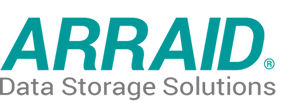About ARRAID's Emulation Products
Disk Drive Emulation
The AEM is a programmable disk drive emulator. Through a combination of a central processor, programmable logic arrays, and protocol dependent logic, the AEM appears to the host computer and controller to be the legacy disk drive.
As with the original drive, the computer's disk controller communicates with interface logic in the AEM. This logic, specifically designed for the legacy disk's interface protocol, handles address and port arbitration, receipt of commands and generation of status. An emulation table in AEM memory holds parameters describing the original drive, such as the number of heads, number of cylinders and number of sectors. Using the emulation table parameters, the interface logic can then respond to commands and status requests just like the original drive.
Data is written to and read from buffer memory in the AEM at the same transfer rate as the original drive. In A and B versions of the AEM, this temporary storage is limited to a relatively small portion of the emulated drive capacity. In C, fully cached versions, there is sufficient temporary storage to hold the entire emulation. Regardless of which version, data is simultaneously stored on a SCSI disk in the original raw disk image format. The SCSI disk ( rotating or the solid state ARRAID Flash Drive (AFD)) is immediately updated in response to a write by the controller.
The AEM is fully compatible with the Customer's existing operating system and application software, as well as all diagnostic tests that are not dependent on the slow electro-mechanical timing of the original drive. The combination of either the rotating disk or the faster solid state disk, buffer caching and read ahead logic reduce seek times and eliminate most track-to-track seeks. The AEM usually provides improved performance over the original drive.
Tape Drive Emulation
The TES is a programmable tape drive emulator. Through a combination of a central processor, programmable logic arrays, and protocol dependent logic, the TES appears to the host computer and controller to be the legacy tape drive.
As with the original tape drive, the computer's tape controller communicates with interface logic in the TES. This logic, specifically designed for the legacy tape's interface protocol, handles address recognition, receipt of commands and generation of status, just like the original drive.
Data is written to and read from buffer memory, at a transfer rate set for optimum performance of the controller or application. Data is then stored on a SCSI disk, preferably to the solid state ARRAID Flash Drive (AFD) or an MO cartridge drive, in "tape image format". Tape drives are sequential data access, record oriented storage devices. Disk drives on the other hand are file oriented, randomly accessed by a head/cylinder or block address. Storing data intended for tape onto a disk drive requires the use of a tape image format that retains record meta data and allows for variable length record and file generation. Software in the TES manages the creation and maintenance of the tape image format, insuring that data written to the "tape" can be read exactly as it was written.
With the solid state ARRAID Flash Drive (AFD) offering higher transfer rates and delays due to physical tape movement eliminated, Customers will see a significant improvement in sustainable data throughput using the TES.

